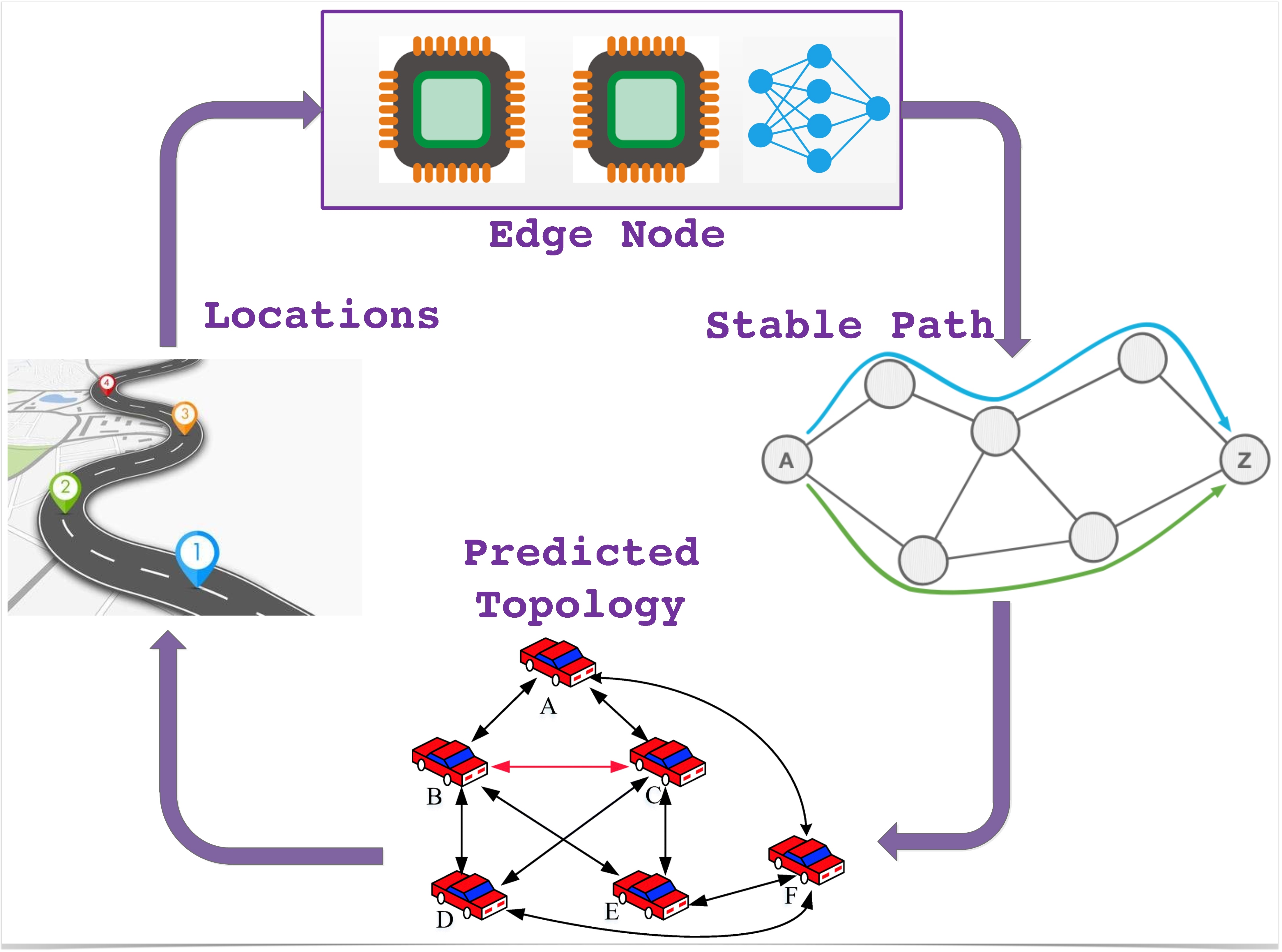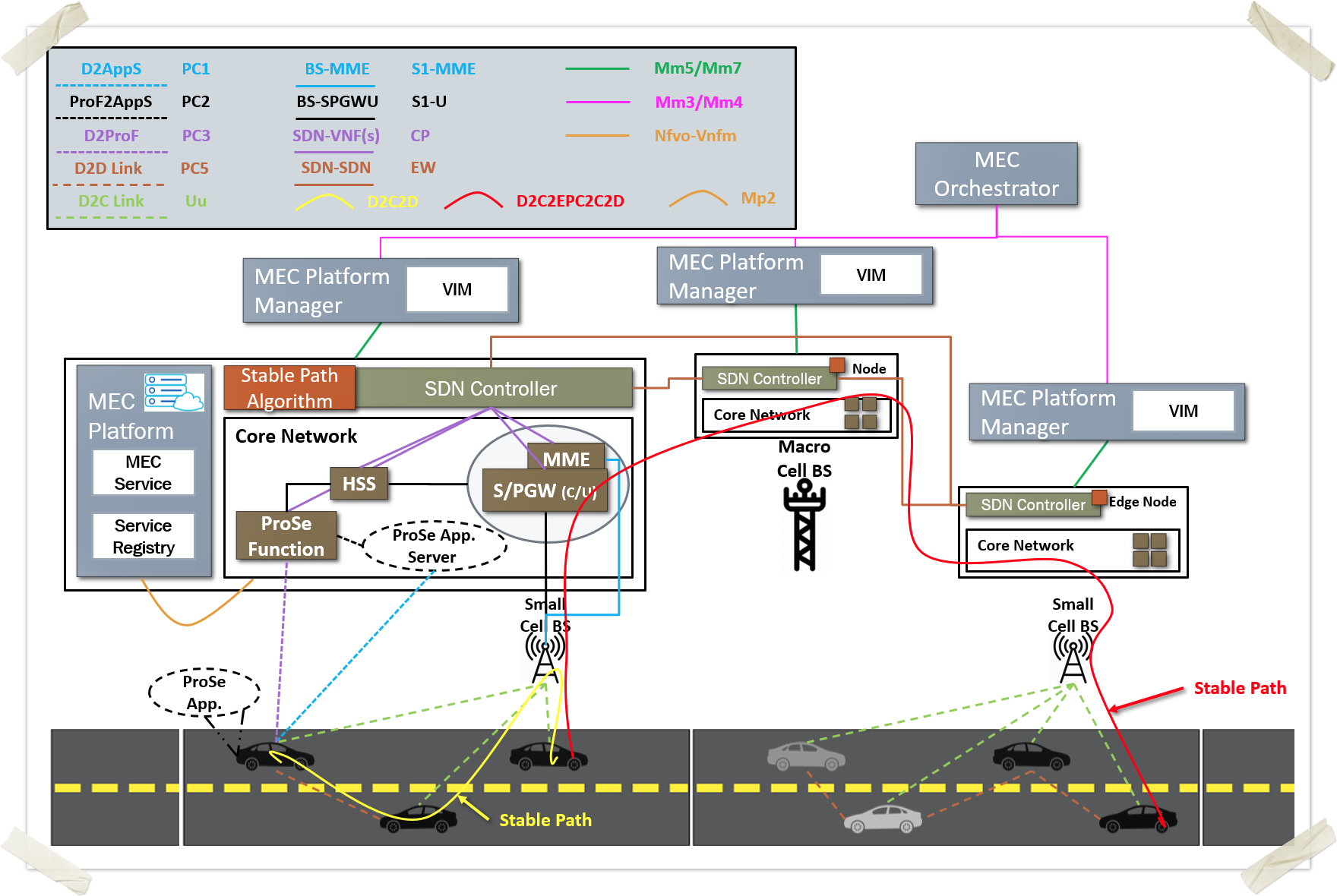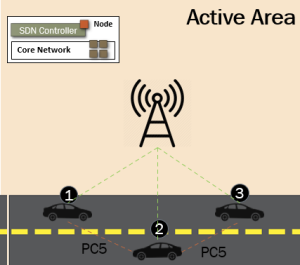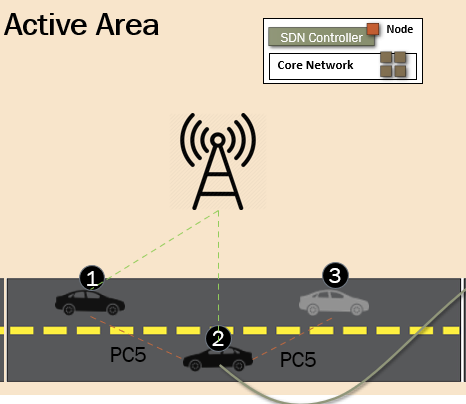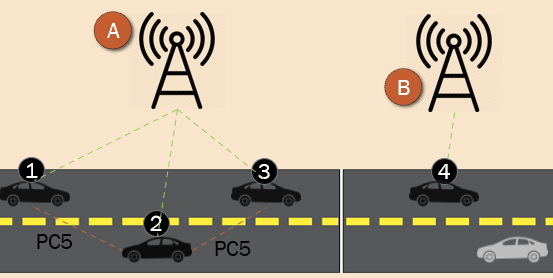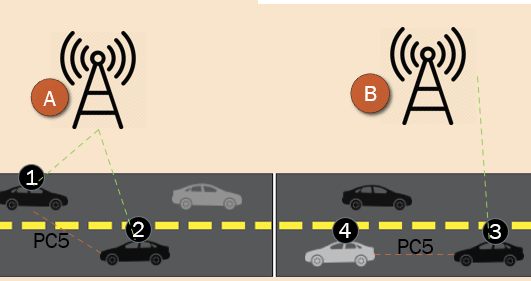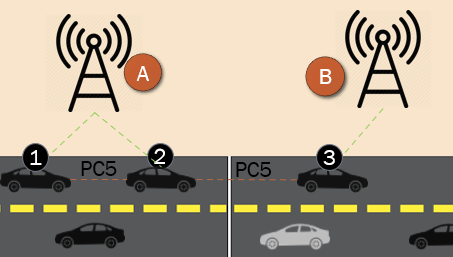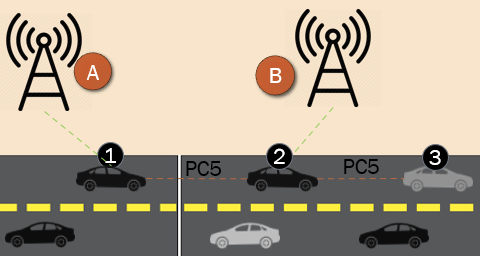MEC-based Stable Topology Prediction for Vehicular Networks
Use Case Details:
Attributes | Description | Informational |
|---|---|---|
| Type | New | |
| Industry sector | Area: SDN & NFV | ATTO RESEARCH focuses on the problems related to networking and software technology for a better connection. It has created a technology that allows to build IT infrastructure, and aims to grow into a ‘Software Defined Infrastructure’ company. |
| Business driver | The stable vehicular network is essential to enable various applications such as autonomous driving through VANETs. Proposed MEC architecture tends to enable a promising infrastructure where a stable network topology can be predicted locally to improve the network performance by providing intensive calculation for vehicles in the adjacent roads. Thus, converging the two concepts of MEC and topology prediction can provide a strong use case for the vehicular networks such as proactive path stabilization. | The MEC-based Efficient Routing Algorithm can provide a stable path by using the predicted future position for the nearby vehicles. The information can also be made available to the adjacent road resulting from being useful to provide a stable topology on the road tracks. |
| Business use case |
| |
| Business cost - Initial build | Minimal configuration is three servers in total:
| Price factor depends on the cost of RSU quality, and should be only considered for physical deployment. i.e. wireless or wired. |
| Business cost - Operational | Virtual environment does not require cost. | |
| Operational need | Using the frontend GUI to:
| |
| Additional details |
| PPT is attached as proposal statement. |
References:
| # | Relevance | Title |
|---|---|---|
| 1 | IoV, Prediction | Abbas, M.T., Muhammad, A. and Song, W.C., 2019. Road-aware estimation model for path duration in Internet of vehicles (IoV). Wireless Personal Communications, 109(2), pp.715-738. |
| 2 | IoV, Prediction | Abbas, M.T., Jibran, M.A., Afaq, M. and Song, W.C., 2020. An adaptive approach to vehicle trajectory prediction using multimodel Kalman filter. Transactions on Emerging Telecommunications Technologies, 31(5), p.e3734. |
| 3 | IoV, Prediction | Abbas, M.T., Muhammad, A. and Song, W.C., 2020. SD-IoV: SDN enabled routing for internet of vehicles in road-aware approach. Journal of Ambient Intelligence and Humanized Computing, 11(3), pp.1265-1280. |
| 4 | RSU, MEC | Wang, X., Han, Y., Leung, V.C., Niyato, D., Yan, X. and Chen, X., 2020. Convergence of edge computing and deep learning: A comprehensive survey. IEEE Communications Surveys & Tutorials, 22(2), pp.869-904. |
| 5 | RSU, MEC | Ndikumana, A., Tran, N.H., Kim, K.T. and Hong, C.S., 2020. Deep Learning Based Caching for Self-Driving Cars in Multi-Access Edge Computing. IEEE Transactions on Intelligent Transportation Systems. |
Motivation:
Motivational aspects are:
- The topology in a vehicular network is updated and retrieved frequently
- This causes path instability
- Vehicular networks are wireless in nature
- However, Software-defined networking (SDN) is originally designed for wired networks
- Leads to the need for topology stability in vehicular networks
To this end, we introduce:
- Computation at the Edge
- Topology prediction to proactively stabilize the paths in vehicular network
- Proximity Services
QoS-based multi-channel Scenario:
The architectural view of our system is as follows:
Use case Examples:
Stable network topology in IoV
Road aware, proactive, and proactive connection
The below figure (shown left side) is a scenario where the devices are under same cell and in coverage, which want to communicate. The below figure (shown right side) is a scenario where the devices are under same cell and one oft them is out of coverage, which want to communicate.
Stable Path Scenarios:
The below figure (shown left side) is a scenario where the devices are under same cell and in coverage, which want to communicate. The below figure (shown right side) is a scenario where the devices are under same cell and one oft them is out of coverage, which want to communicate.
The below figure explores the Device to Device communication where a device 1 wants to communicate device-4 and both of them reside under a different Cell node. In this case, the packet is forwarded from one edge vEPC to another. This way the connectivity is provided as follows:
The below scenario explains the same as immediate previous scenario but the only difference among them is that one of the device is out of coverage and proximity service plays the role of provisioning the location of such devices.
The below figure shows the direct communication between the devices which reside under different Cells. The below path was provided as a result of proactive approach that we propose in our system. The major difference between the below two scenarios is that in such cases, we don't require the involvement of Edge vEPC in order to forward the packet to another road segment, thus reducing the latency and improving the performance in terms of bandwidth and efficient resource usage of the cellular spectrum. Both the devices are in coverage.
The below figure also shows the direct communication between the devices which reside under different Cells. The below path was provided as a result of proactive approach that we propose in our system. The difference from previously mentioned scenario is that one of these devices are out of coverage. In this case also, the benefits to reduce the latency and efficient resource usage were achieved.
Contributors:
| Company | Email (Contact) | Profiles | Picture |
|---|---|---|---|
| Asif Mehmood | Jeju National University | malikasifmahmoodawan@gmail.com | |
| Afaq Muhammad | Jeju National University | afaq@jejunu.ac.kr | |
| Saqib Muhammad | Jeju National University | saqib@jejunu.ac.kr | |
| Muhammad Ali Jibran | --- | alijibran35@gmail.com | |
| Wang-Cheol Song | Jeju National University | philo@jejunu.ac.kr | |
| Taekyung Lee | ATTO Research | taekyung.lee@atto-research.com |
Help Us Improve the Wiki
This Wiki is owned by the Akraino Community. Contributions are always welcomed to help make it better!
In upper right, select Log In. You will need a Linux Foundation Account (can be created at https://identity.linuxfoundation.org/) to log-in. For a Wiki tutorial, please see Confluence Overview. Thank you!
Recent space activity
Links
- Akraino Website
- Documentation
- Community Meetings & Calendar
- Join LF Edge
- Network Cloud Family Seed Code (Network Cloud Blueprint)
